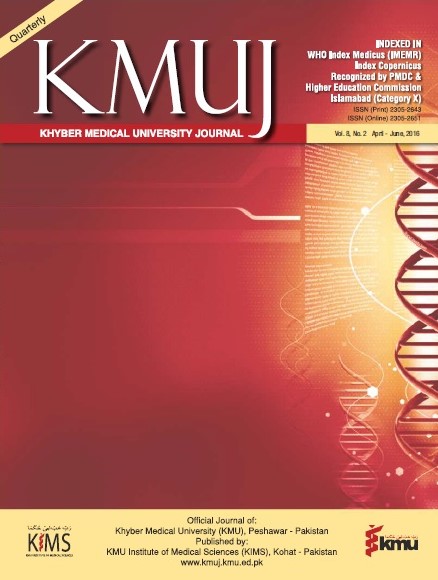NEUROREHABILITATION IN PAKISTAN: NEEDS, CHALLENGES AND OPPORTUNITIES
Main Article Content
Abstract
The prevalence of disability is substantially
higher in the low-income
countries as compared to the high-income
countries.1 An estimated 80% of
the people with disabilities live in the
low-income countries, which is more
than one billion people with disabilities
according to the world report on
disability.2 Among these persons with
disabilities (PWD), 110-190 million have
significant disabilities including difficulty
in mobility, self-care, communication
and participation in education or employment.
Neurological disorders like
stroke, spinal cord injuries, traumatic and
non-traumatic brain diseases and neurodegenerative
diseases are an important
cause of disability worldwide. Most of
them result in long-term disabilities and
residual weaknesses, which adversely
affects the mobility and quality of the
life of the patients. In addition, long-term
management of these often-permanent
disabilities is “a huge unmeasured economic
burden and psychological stress
on families who take care of their functionally
dependent relatives.3
Neurologic rehabilitation or neurorehabilitation
is a dynamic process which
helps the patients with neurological
disabilities to optimize their physical,
cognitive, emotional, and social functions
for maximum independence and social
reintegration.4,5 Unlike other medical
specialties where physician is the sole
decision maker, neurorehabilitation is a
multi-disciplinary team work. The important
members of a neurorehabilitation
team include physiatrists (Rehabilitation
Medicine physicians), neurologists, physical
therapists, occupational therapists,
neuropsychologists, speech therapists,
nutritionists, and nurses, along with the
patient’s caregivers.4 The conditions that
are likely to benefit from an multi-disciplinary
neurorehabilitation team include,
but are not limited to, stroke, traumatic
brain injury, spinal cord injury, multiple
sclerosis, Parkinson’s disease, cerebral
palsy, motor neuron disease, Gullian
Barre syndrome and post-polio syndrome.
Pakistan like many other developing
countries is facing the problem of a huge
population with an inadequate number
of skilled and trained neurorehabilitation
specialist.6 Rehabilitation is still confused
with physiotherapy instead of being a
concept of a multidisciplinary team approach.
7 This is further complicated by
a sudden and explosive increase in the
number of physiotherapy Institutes in the
recent years, which are producing a large
number of physiotherapists. Majority of
the trained rehabilitation medicine physicians
are working in the Pakistan Armed
forces, and thus are inaccessible to most
of the PWDs in Pakistan.8 There are less
than 20 departments of rehabilitation
medicine in the country with 190 million
people.8 There is only a single 4 years
fellowship program in Rehabilitation
medicine being offered by the College
of Physicians and Surgeons of Pakistan.
There is no accredited neurorehabilitation
fellowship or sub-specialty training
available inside Pakistan.
Article Details
Work published in KMUJ is licensed under a
Creative Commons Attribution 4.0 License
Authors are permitted and encouraged to post their work online (e.g., in institutional repositories or on their website) prior to and during the submission process, as it can lead to productive exchanges, as well as earlier and greater citation of published work.
(e.g., in institutional repositories or on their website) prior to and during the submission process, as it can lead to productive exchanges, as well as earlier and greater citation of published work.
